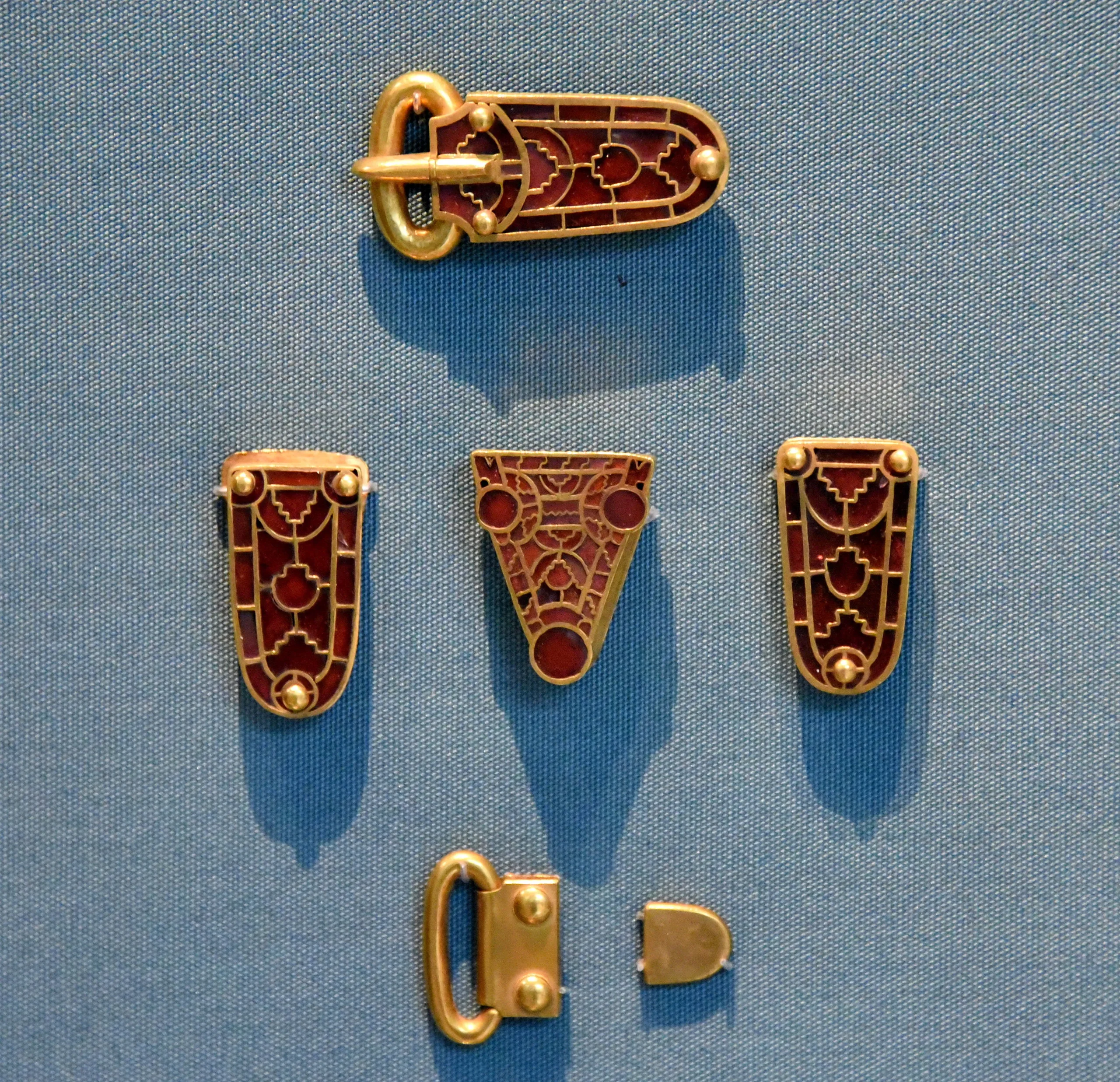Sutton Hoo Buckle
Global History in a Golden Clasp
Among the treasures uncovered at Sutton Hoo—a royal burial site in Suffolk dating to the early 7th century—few objects command attention like the intricately worked gold belt buckle. It’s heavy, boldly designed, and technically complex, fitted with a triple-lock mechanism and covered in interlaced geometric motifs. But its story isn’t just about English royalty. The buckle is a cultural document—an object that carries the trace of far-reaching connections across continents and centuries.


Today, it’s easy to think of early medieval England as insular. But this buckle tells a different story. Its gold may have been sourced from recycled Roman coins—melted down solidi that continued circulating long after the fall of the Western Empire. Its garnets likely came from South Asia, possibly Sri Lanka or India, brought to England through trade routes that passed through the Byzantine world and the Eurasian steppe. Its cloisonné technique shows influence from Mediterranean metalwork. The result is not a national artifact, but a global one.
The Sutton Hoo buckle challenges the idea of “local” heritage. What might seem like a symbol of early English identity was, in fact, shaped by global forces. Its intricate surface patterns weren’t just decorative—they echoed artistic vocabularies circulating from Byzantium to India. Even in 7th-century England, elite adornment reflected a world of exchange, not isolation. This isn’t a story of pure origins or fixed traditions, but of shared influence—reminding us that culture has always been a collaborative act.
For those drawn to adornment as a form of storytelling, the buckle holds deep relevance. It affirms that jewelry is not only decorative—it is historical. Portable and personal, it becomes a micro-history of movement, power, and artistic exchange. This matters. At Iaia Caravan, we care not just about what a piece looks like, but what it carries. The Sutton Hoo buckle reminds us that meaning is embedded in form: in the choice of materials, in how they’re worked, and in the paths they travel.
To wear gold—then or now—is to wear history. And in the case of this 7th-century clasp, it’s a history that spans empires. That it was buried alongside a ruler suggests the object’s power went beyond ornament—it was a marker of identity, wealth, and worldly reach.
What might appear as a singular expression of early English heritage turns out to be anything but. It’s a story of trade, migration, and interconnectedness—timeless themes that continue to shape how we adorn ourselves today.